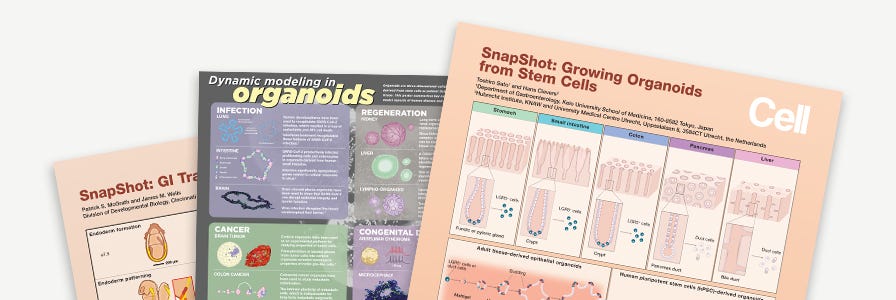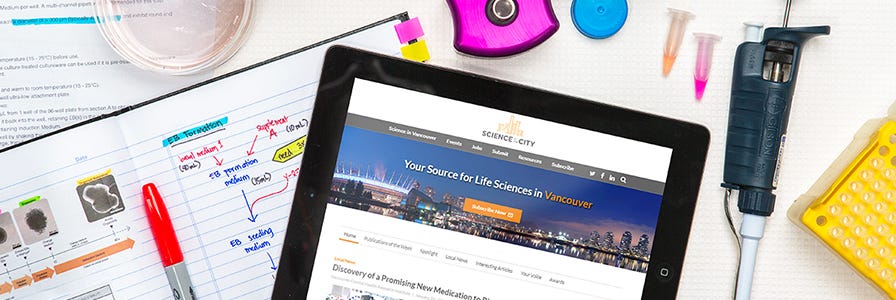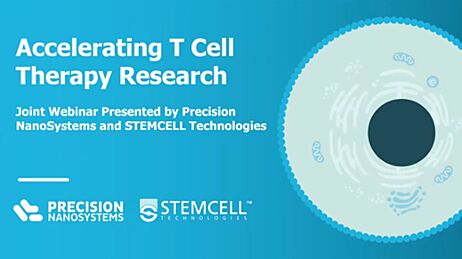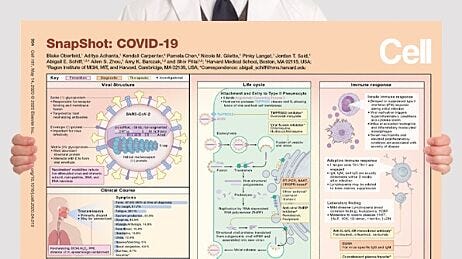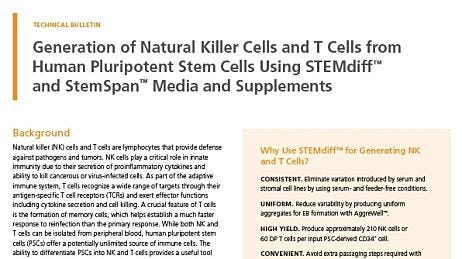A Year in Review: Our Favorite Science of 2021
SARS-CoV-2 and the Brain, Human Embryogenesis, Cancer Research, 3D Bioprinting, and Beyond

As research into SARS-CoV-2 continued in 2021, scientists around the world contributed to significant advances in our understanding of the virus, including its effects on the nervous system. Exciting discoveries have also taken place in other areas of research this year, from cancer biology to novel 3D bioprinting technologies. Here at STEMCELL, we are continuing our tradition of sharing some research discoveries that caught the attention of our scientists throughout the year. I hope you enjoy our 2021 selections.
Dr. Sharon Louis - Senior Vice President, Research and Development
Science Selected by Our Scientists

Dr. Jin-Yuan Wang’s Favorite Science of 2021
Senior Scientist
Neural
Dysregulation of Brain and Choroid Plexus Cell Types in Severe COVID-19
This year, the COVID-19 pandemic has continued to affect the world and many studies have been conducted in an attempt to combat this disease. While SARS-CoV-2 primarily attacks the respiratory system, some COVID-19 patients and survivors also show neurological symptoms. To date, the cellular and molecular mechanisms on how this virus affects the brain remain elusive. Andrew C. Yang, Fabian Kern, and colleagues analyzed the single-nucleus transcriptome data from frontal cortex and choroid plexus samples across control individuals and patients. They made a series of interesting discoveries in this study, including the identification of gene expression profiles associated with COVID-19 that overlap with those seen in chronic brain disorders. This study established a molecular framework for a better understanding of the COVID-19-related neurological symptoms. Read the paper >
ApoE-Isoform-Dependent SARS-CoV-2 Neurotropism and Cellular Response
In vitro models are critical for understanding the mechanism of diseases. In this study, researchers from the University of California, Los Angeles took advantage of hiPSC differentiation technology to generate neurons, astrocytes, and brain organoids to study neurotropism and the cellular response to SARS-CoV-2. Interestingly, while the viral infection of hiPSC-derived neurons and astrocytes was low, they found a boosted infection in neuron-astrocyte co-cultures and organoids. Furthermore, their data showed that ApoE4/4 hiPSCs-derived neurons and astrocytes had an increased rate of SARS-CoV-2 infection. Their findings not only reveal the potential role of ApoE4 in COVID-19 severity, but also give insight into the impact of COVID-19 on different patient populations. Read the paper >
A Human Three-Dimensional Neural-Perivascular ‘Assembloid’ Promotes Astrocytic Development and Enables Modeling of SARS-CoV-2 Neuropathology
As mentioned above, although clinical observations indicate that the brain can be affected by SARS-CoV-2 infection, human neurons are not susceptible to infection in vitro. In this study, Lu Wang et al. established a human three-dimensional neural-perivascular “assembloid” to model SARS-CoV-2 neuropathology. Their data showed that PSC-derived pericyte-like cells (PLCs) could induce astrocyte maturation when integrated into a PSC-derived cortical organoid. Upon virus infection, PLCs act as “mini factories” to produce SARS-CoV-2. Then, the virus spreads to astrocytes and triggers type I interferon transcriptional response. This PSC-derived “assembloid” could be used as an in vitro model for viral infection of neural tissue. Read the paper >
Neural Organoid Learning Center
Explore our learning center to view protocols, watch webinars and videos, read a mini-review on neural organoids, and more.
Single Cell Characterization of Dorsal and Ventral Forebrain Organoid Models
Learn how STEMdiff™ Dorsal and Ventral Forebrain Organoid Differentiation Kits can be used to generate models of the developing human forebrain, as Leon Chew presents on the cell type composition and activity of the resulting organoids.

Fayeza Islam’s Favorite Science of 2021
Scientist
PSC
Blastocyst-Like Structures Generated from Human Pluripotent Stem Cells
The study of human embryogenesis and disease presents numerous limitations due to accessibility and ethical considerations. This is another exciting publication from the Jun Wu lab, which showcases how human pluripotent stem cells in a dish provide an opportunity to model human embryogenesis. Although there have been recent advances in post-implantation stages of embryonic development, we have a limited understanding of the pre-implantation human blastocyst. This paper demonstrates how human blastoids (using our very own Aggrewell™400!) provide a unique model to study early human development and disease. Read the Paper >
Genetically Variant Human Pluripotent Stem Cells Selectively Eliminate Wild-Type Counterparts Through YAP-Mediated Cell Competition
How do hPSC cultures become genetically unstable over time? Price et al. describe the mechanism by which cell-cell competition between wild-type and variant clones results in the expansion of variant clones that display greater growth kinetics in specific culture conditions. This paper provides insight on how yes-associated protein (YAP) mediates the winner- versus loser-cell phenotype in hPSCs. Understanding the factors that play a role in selective advantage of certain hPSC clones is critical to developing scale-up methods for hPSC research or clinical studies. This paper highlights the optimal culture conditions for reducing the growth of variant clones. Read the Paper >
Stem Cells Expand Potency and Alter Tissue Fitness by Accumulating Diverse Epigenetic Memories
How do stem cells remember? Can memories lead to mayhem? To unravel the mystery, read the paper by Gonzales et al. (published in the distinguished laboratory of Elaine Fuchs). The research describes the widespread phenomena of epigenetic memory, once only thought to be a property of immune cells, but now discovered in stem cells as a mechanism for efficient tissue repair and regeneration. By gaining insight on how stem cells’ memories influence future responses, we can better understand their impact on tissue fitness and fate. Read the Paper >
hPSC Survey Results
Learn about the latest insights and trends in hPSC research, such as irreproducibility and quality control, and how to address them in your research.
What Are Induced Pluripotent Stem Cells and How Do You Use Them?
Hear from Dr. Anjana Nityanandam, Director of the Human Stem Cell Lab Core Facility at St. Jude Children's Research Hospital, who provides some introductory examples of how iPSCs are used for disease modeling and walks through how to generate and characterize iPSCs.

Dr. Lev Lewis’ Favorite Science of 2021
Scientist
Particles
Wearable Materials with Embedded Synthetic Biology Sensors for Biomolecule Detection
The combination of wearable sensors, smart materials, synthetic circuits, and CRISPR-based detection have culminated in this wearable face mask, developed by Nguyen and colleagues, to detect SARS-CoV-2. There are four key stages: 1) lysis of viral membranes using lyophilized reagents; 2) amplification of SARS-CoV-2 S gene using RT-RPA; 3) CRISPR detection of amplified sequence; 4) visual output signal using colorimetric gold nanoparticle probes. The use of cell-free synthetic biology is expanding our design and development tool kit for downstream applications. Read the paper >
Fracture, Fatigue, and Friction of Polymers in Which Entanglements Greatly Outnumber Cross-Links
Hydrogels are used in a wide variety of applications, from baby diapers to contact lenses. Although they can be strong and stretchy, hydrogels tend to fail under repeated stress and are not very durable. Hydrogels are typically held together by entangled or crosslinked chains of polymers. Here, Junsoo Kim and colleagues increased the toughness of hydrogels by increasing the number of entangled chains compared to crosslinks, whilst still maintaining elasticity. This work expands our understanding of how physical forces at the molecular scale translate to bulk material properties and make these hydrogels great candidates for applications such as artificial muscles or joints. Read the paper >

Dr. John Stingl’s Favorite Science of 2021
Senior Principal Scientist
Mutant Clones in Normal Epithelium Outcompete and Eliminate Emerging Tumours
Tumor formation in tissues is actually quite rare, despite constant exposure to carcinogens. This paper by Colom et al. describes that exposure of the esophagus to a carcinogen will induce the formation of many little tumors, but unexpectedly, the vast majority of these will simply disappear in the following months. The authors demonstrate that surrounding normal cells that have picked up oncogenic mutations, but have not become tumorigenic themselves, can outcompete the established tumors and push them out of the tissue. This is an entirely unexpected and novel mechanism by which tissues protect themselves from cancer. Read the paper >
NSG-Pro Mouse Model for Uncovering Resistance Mechanisms and Unique Vulnerabilities in Human Luminal Breast Cancers
Estrogen receptor (ER)-expressing breast tumors are the most common type of breast cancer, but yet these tumors are difficult to grow in culture or xenotransplant into immune-deficient mice. This has seriously hindered breast cancer research. Sun et al. describe a generation of new transgenic mice that express human prolactin, which dramatically increases the engraftment success of ER+ tumors. This result is unexpected since prolactin has historically been associated with inducing milk production in the mammary gland, which is not a function of the ER+ cells. This gives cancer researchers a new model system for their experiments. Read the paper >
Compressive Stress-Mediated p38 Activation Required for ERα + Phenotype in Breast Cancer
Estrogen receptor (ER)-expressing breast tumors comprise approximately two-thirds of all breast cancer cases; however, ER+ tumors have been almost impossible to grow in culture since ER protein is quickly downregulated in vitro. This manuscript by Munne et al. demonstrates that the stiffness of the extracellular matrix used in the culture dictates what types of breast cells can grow in culture, and interestingly, that compression of the cultures with physical force (using a metal plate and a magnet) can turn on ER expression in cultured human breast cells. The authors also demonstrate that tumor stiffness, as indicated by mammographic density, is directly correlated to ER expression in breast cancer patients. Read the paper >
Panel: Advances in Organoid Applications
Learn what global organoid experts are saying on topics impacting the adoption and future of organoid technologies, with this series of presentations provided in partnership with Nature Research.
Epithelial and Organoid Wallcharts
Get an informative visual reference on topics related to organoids and epithelial cells—including their biology and applications—with a complimentary wallchart.

Chloé Paka’s Favorite Science of 2021
Early Stage Researcher
Media
Neuropeptide S Receptor 1 Is a Nonhormonal Treatment Target in Endometriosis
Endometriosis is a gynecological disorder affecting around 10% of people who menstruate. In affected individuals, cells of the inner lining of the uterus (endometrium) migrate out of the uterus, causing inflammation, pain, and reduced fertility. Patients are often offered hormonal treatments or surgery, which lessen symptoms but do not cure the disease. In this study, Tapmeier et al. identify NPSR1, the gene encoding neuropeptide S receptor 1 (a G protein-coupled receptor), as being associated with the disease. This discovery reveals great potential for a new non-hormonal treatment of endometriosis (using NPSR1 inhibitor, SHA 68R) and provides hope for improved therapy. Read the paper >
Human Neural Tube Morphogenesis In Vitro by Geometric Constraints
Studying human neural development is a vast challenge, as samples are often rare and difficult to obtain. This publication by Karzbrun et al. provides a new and reliable model for neural tube morphogenesis using the self-organizing properties of human pluripotent stem cells, directed by micropatterning (on an organ-on-a-chip device) and minimal morphogenetic compounds (BMP4, SB431542). The authors managed to recapitulate neural tube closure, the developing neuroectoderm, and neural crest and surface ectoderm populations with proper migration patterns. This tool offers exciting perspectives for neural tube defects modeling. Read the paper >
Single-Cell Transcriptomic Analyses Provide Insights into the Developmental Origins of Neuroblastoma
This study drew my attention because of its focus on neuroblastoma, a childhood cancer thought to be caused by defects of neural crest and sympathoadrenal differentiation, which I am working on as part of my PhD. In this study, Jansky et al. aim to identify the cell of origin of neuroblastoma. Using single-cell RNA sequencing, they show transcriptional similarities between human embryonic adrenal glands and neuroblastoma tumors. More importantly, they demonstrate a clear link between the differentiation status of the heterogeneous cell population contained in the tumor and its associated clinical phenotype. This work, and others published this year, significantly improve knowledge on sympathoadrenal development and neuroblastoma onset. Read the paper >
hPSC-Derived Neural Crest: Induction and Axial Patterning
Learn how embryonic development informs the in vitro derivation of neural crest cells from hPSCs, and about the importance of their axial identity to model and treat disease, with Dr. James Hackland.
Brain Tumor Development and Progression
Follow key signaling pathways and the essential mechanisms at work in glioblastoma multiforme with this free wallchart.

Payam Zachkani’s Favorite Science of 2021
Systems Engineer
Microfluidic Platform Accelerates Tissue Processing into Single Cells for Molecular Analysis and Primary Culture Models
This paper by Lombardo et al. demonstrates how a microfluidic solution can improve tissue dissociation performance in terms of yield, processing time, stress response, and reproducibility. The improvement in yield is the result of intermediate recovery of shear-sensitive cells from the system at periodic intervals during processing. The device does not automate tissue mincing; however, it integrates digestion, disaggregation, and filtration into a single, elegant microfluidic device, allowing efficient production of single-cell suspensions that are immediately ready for downstream analysis. Read the paper >
Ferromagnetic Soft Catheter Robots for Minimally Invasive Bioprinting
Having developed a magnetically controlled, minimally-invasive implant during my graduate studies, I was fascinated when I read this paper. The authors developed a magnetically controlled catheter robot capable of in vivo bioprinting. The ferromagnetic soft catheter robot (FSCR)'s tip position was controlled numerically using external magnets while extruding ink to print various materials with different rheological properties and functionalities. An in situ printing strategy for curved surfaces was developed, and minimally invasive in vivo bioprinting in a rat model was demonstrated. Read the paper >
Application of 3D Bioprinting in the Prevention and the Therapy for Human Diseases
I found this review by Hee-Gyeong Yi, Hyeonji Kim, and colleagues to be a great resource for understanding the novel applications of bioprinting. The paper describes bioprinting technologies and materials first, then reviews the in vitro models created with various biofabrication technologies for infectious disease research and introduces 3D bioprinted in vitro models that have the potential to be applied as infection disease models. It covers 3D bioprinting techniques for producing drugs and drug delivery systems that are applicable to infectious diseases. Read the paper >
Subscribe to Science Newsletters
Keep current with your field. Subscribe to Science News for free, weekly newsletters featuring recent top peer-reviewed research and review papers, as well as policy and science news.
Listen to the Stem Cell Podcast
Listen to updates and insights on the latest publications, and conversations with experts in the stem cell field. Download episodes from your favorite podcast app, or stream episodes live on the Stem Cell Podcast website.
Listen to the Immunology Podcast
Listen to updates and insights on the latest publications, and conversations with experts in the immunology field. Download episodes from your favorite podcast app, or stream episodes on the Immunology Podcast website.
Subscribe to Science in the City
Stay connected with your local life science community through Science in the City. Subscribe to the Vancouver, Boston, or Seattle newsletters to stay up to date with the latest news, jobs, and events in your city.





